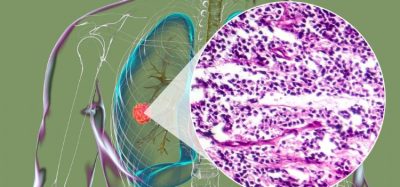AMR certification: recognising responsibly in antibiotic manufacture
Posted: 22 June 2023 | Catherine Eckford (European Pharmaceutical Review) | No comments yet
Following the recent launch of the BSI’s AMR certification, EPR invited Steve Brooks from the AMR Industry Alliance and BSI’s Courtney Soulsby to elucidate its significance for antibiotic manufacturers and the wider pharma industry.


On 6 June 2023, the British Standards Institute (BSI) launched its Minimized Risk of Antimicrobial Resistance (AMR) certification for antibiotic manufacturing.
According to the information sharing platform AMR Insights, AMR is considered one of the biggest global threats to health and food safety. Combatting AMR calls for international cooperation based on the One Health Approach.1
Adopting both the Antibiotic Manufacturing Standard and certification will help to “mitigate the risk of the development and spread of AMR in the environment,” according to Courtney Soulsby, Global Director of Healthcare Sustainability at BSI and Steve Brooks, Manufacturing Working Group Chair at the AMR Industry Alliance.
Soulsby and Brooks explain what the new certification means for antibiotic manufacturers and the wider pharma industry, and its anticipated benefit for supply chain sustainability.
Why is BSI’s AMR certification significant?
This certification is intended to build trust in the wider ecosystem…providing verification that antibiotic manufacturing is controlled to minimise the risk of resistance developing in the environment”
Minimized Risk of Antimicrobial Resistance (AMR) certification for antibiotic manufacturing is significant because it is the first of its kind to have an independent third-party validation of environmental considerations for the manufacturing of antibiotics. Through the certification, we are verifying whether environmental and waste controls are in place throughout the antibiotic supply chain production and chain of custody, from where the drug is manufactured from the active pharmaceutical ingredient (API) stage towards finished drug production.
This certification is intended to build trust in the wider ecosystem—between manufacturers, procurers from health systems, as well as academia and the financial investment community—providing verification that antibiotic manufacturing is controlled to minimise the risk of resistance developing in the environment. This represents one of the efforts necessary to address AMR as an identified top 10 public health threat by the World Health Organization (WHO).
What are two of the most overlooked areas in overcoming AMR?
Until recently, the environment was one of the most overlooked areas of AMR. To help address this, the United Nations Environmental Programme last year joined as the fourth international organisation within the quadripartite for ‘One Health’. The four-party’s goal is to “strengthen their co-operation and fully integrate environmental considerations into ‘One Health’ efforts, including those related to AMR.”2
Within the environment, while industry is focused on addressing manufacturing emissions, more work must also be done, especially in developing economies, to improve waste management, sanitation and hygiene to minimise the spread of infectious and resistant-infectious diseases.3
What are the three main components needed for an antibiotic manufacturer to be certified?
The three main components antibiotic manufacturers will need to show to achieve certification are:
- that stringent environmental management system controls are in place, especially as it relates to waste and wastewater discharge. Essentially, manufacturers must be able to show the right governance and management system controls relating to their environmental practices.
- that they have demonstrated through chemical engineering calculation (known as mass balance), sampling and analysis, or zero liquid discharge models, that the concentration of antibiotics in the environment resulting from manufacturing wastewater, known as the predicted environmental concentration (PEC), or the measured environmental concentration (MEC), is less than the predicted no-effect concentrations (PNECs) published by the AMR Industry Alliance
- to participate in annual BSI surveillance – a formal process that will provide independent third-party review of any such changes to ensure the validity of the certificate in the years between three-year re-certification.
What will be the biggest impact of the certification on the pharma supply chain?
Certification to the Manufacturing Standard has the potential to positively impact global antibiotic supply through antibiotic emission reduction and recognition of the value of responsibly made antibiotics”
Certification to the Manufacturing Standard has the potential to positively impact global antibiotic supply through antibiotic emission reduction and recognition of the value of responsibly made antibiotics. In the long run, we believe this has the potential to bring the supply chain in line with a universal approach to responsible manufacturing, which is good for both public health and the industry.
Tackling the silent pandemic: AMR Industry Alliance sets the Standard
How will certification help prevent the spread of AMR?
Adoption of the Manufacturing Standard and Certification will help drive the reduction of antibiotic emissions across the global antibiotic supply chain, helping to mitigate the risk of the development and spread of AMR in the environment.
About the interviewees
Courtney Soulsby is the Global Director, Healthcare Sustainability for BSI. Working to understand market challenges and future needs of the healthcare sector, Courtney works with key clients and industry partners to develop holistic solutions, strategies and programmes. Having worked with the pharmaceutical industry and their downstream logistics supply chain for over ten years, Courtney has a deep understanding of the issues relating to regulation, compliance, quality, and other risk exposures when transporting medicines.
Steve Brooks is the Manufacturing Working Group Chair for the AMR Industry Alliance. He currently serves as an advisor to the Antimicrobial Resistance Industry Alliance (AMRIA) and chairs the AMRIA Manufacturing Work Group. Steve led Pfizer’s Global EHS organisation from 2007 to 2018 during which time he assumed responsibility for Business Resiliency and Environmental Sustainability for the company. Steve has been an advisor to the AMRIA since leaving Pfizer in 2019.
References
- One Health Basics [Internet]. 2021. Available from: https://www.cdc.gov/onehealth/basics/index.html#:~:text=One%20Health%20is%20a%20collaborative.
- Bracing for Superbugs: Strengthening environmental action in the One Health response to antimicrobial resistance, pg 56. [Internet] UNEP. 2023. [cited 2023Jun]. Available from: https://www.unep.org/resources/superbugs/environmental-action.
- Bracing for Superbugs: Strengthening environmental action in the One Health response to antimicrobial resistance, pg 4. [Internet] UNEP. 2023. [cited 2023Jun]. Available from: https://www.unep.org/resources/superbugs/environmental-action.
Related topics
Antibiotics, Big Pharma, Biopharmaceuticals, Drug Development, Drug Manufacturing, Drug Supply Chain, Industry Insight, Interviews, Manufacturing, Regulation & Legislation, Research & Development (R&D), Sustainability, Therapeutics
Related organisations
Related drugs
Related people
Courtney Soulsby (BSI), Steve Brooks (AMR Industry Alliance)









